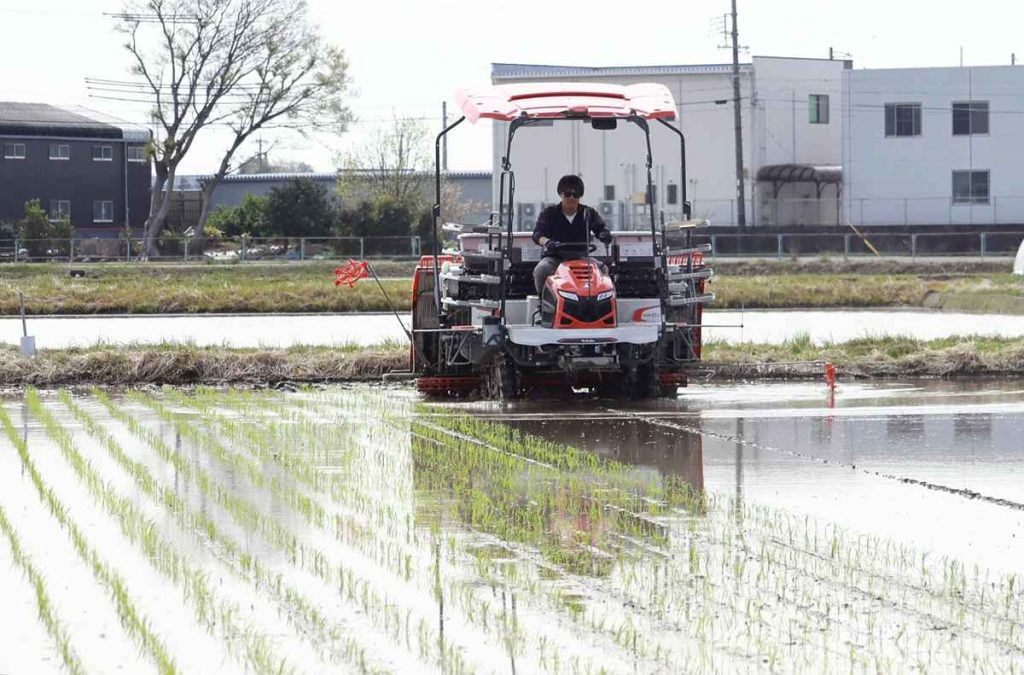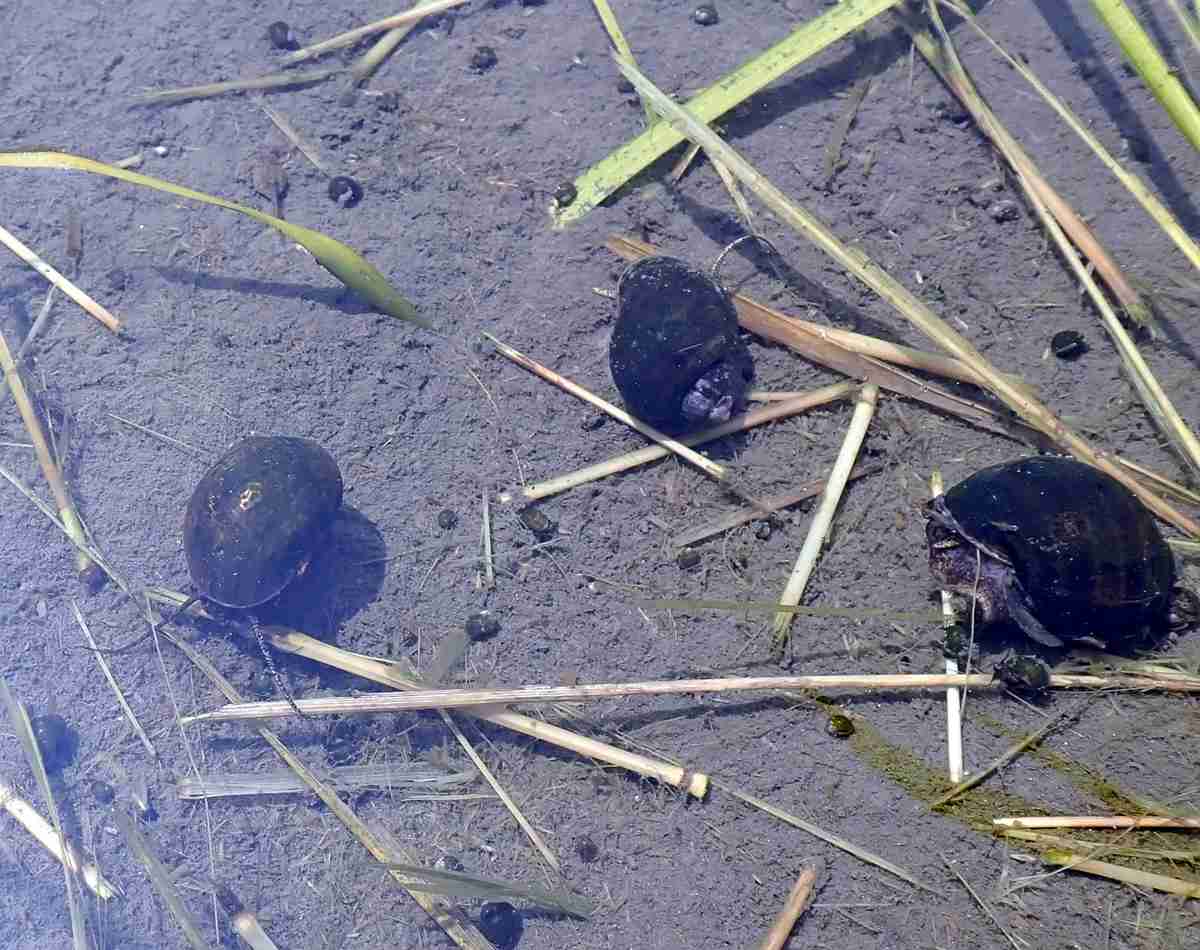Tags
Aichi Rice Production Under Siege from Warming Climate; Record Heat Stunts Crop Growth, Causes Greater Pest Activity

A rice producer plants early-season Akita Komachi rice in Yatomi, Aichi Prefecture, on April 11.
By Keisuke Kono / Yomiuri Shimbun
NAGOYA — Amid nationwide high rice prices, Aichi Prefecture is striving to increase rice production. The prefecture, though, faces a formidable threat from pests, whose damage is intensified by global warming, making it more difficult to combat them.
The prefecture has set its production target for this year at about 131,800 tons — an increase of about 5,400 tons from the previous year and the highest since 2018 — with the aim of using this increased output to bring down soaring prices.
Even now, when farmers across the prefecture are only at the stage of early-season planting, they are already contending with challenges like pest damage, a problem believed to be aggravated by global warming.
On April 11 in Yatomi in the prefecture, employees of YTAgri, a rice farming business owning about 70 hectares of paddies, planted 400 trays of Akita Komachi rice seedlings, anticipating a harvest of about 12 tons in early August.
Last year, YTAgri produced about 336 tons of rice. Ryota Yamaguchi, the representative of the company, said emphatically: “The best way we can help consumers facing this rice shortage is to maximize production. While we can’t instantly expand our planted area, we will dedicate ourselves to boosting yields.”
Aiming to produce 380 tons this year, the company is investing in its paddies, fortifying them through measures like increased fertilization for larger ears of rice and strict pest and disease management. Nevertheless, Yamaguchi worries: “Fertilizer costs are 1.5 times what they were five years ago. Fuel prices are rising too, which is another headache.”
Aiming to hold down spiking rice prices, the central government, which had previously set national production targets, shifted this responsibility to the prefectural level in 2018.
The targets set by the Aichi Prefecture’s agricultural regeneration council, a group established by the prefectural government and producer organizations, were previously on a slight downward trend, from about 131,300 tons each year between 2018 and 2022 to about 129,000 tons in 2023, and then to roughly 126,400 tons in 2024. However, this year’s target is about 131,800 tons, up by about 5,400 tons from last year.
The prefecture reported that last year’s rice harvest was only 124,300 tons as a result of poor growth due to high temperatures and other factors. Furthermore, the first-ever temporary Nankai Trough earthquake warning, issued last summer, is thought to have intensified the rice shortage by prompting increased household stockpiling.
In addition to impacting rice growth, global warming is posing another problem for producers by contributing to a surge in pests.

Invasive giant apple snails are seen in Aichi Prefecture.
The invasive giant apple snail, not native to Japan, poses a significant threat, as it voraciously consumes young, tender rice seedlings within two to three weeks of planting and deposits large, toxic egg masses.
A survey last year by the Aichi Prefectural Agricultural Research Center found the giant apple snail in a record 35.4% of 130 studied rice paddies. In the Mikawa region, some farmers reported planting rice seedlings one day and finding them entirely consumed the following morning.
Another serious issue is the damage caused by rice stink bugs, which feed by piercing rice ears and sucking their sap around the summer before harvest, leading to blackening and reduced rice quality.
In some areas, the population of these bugs has reached 10 times the normal level. The Agriculture, Forestry and Fisheries Ministry explains that this increase stems from a larger number of bugs surviving the winter because of global warming.
JA Aichi Economic Federation reports that the proportion of top-grade rice harvested in the prefecture fell from the usual 80% to 40% for the 2023 and 2024 crops due to rice stink bug damage and other causes.
“Reduced yield and quality directly cut into profits. Although we can’t predict the extent of the damage, we will quickly share information with producers and work with local governments to offer effective pest control guidance when outbreaks occur,” a federation official said.
https://japannews.yomiuri.co.jp/business/economy/20250524-255921/Published Date: May 24, 2025






